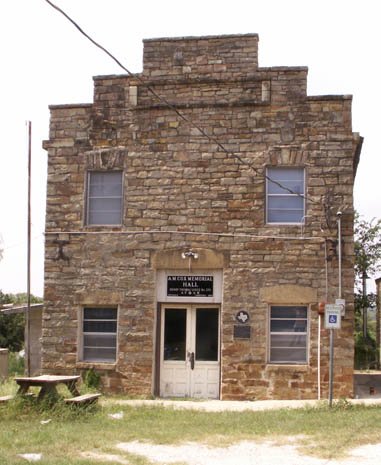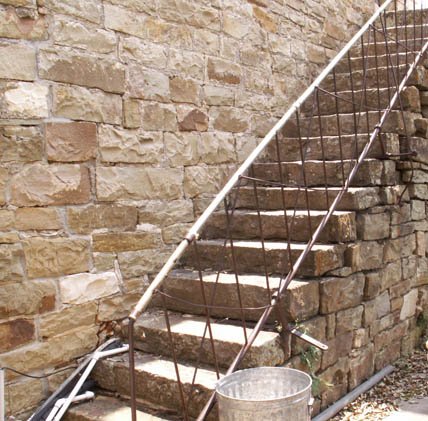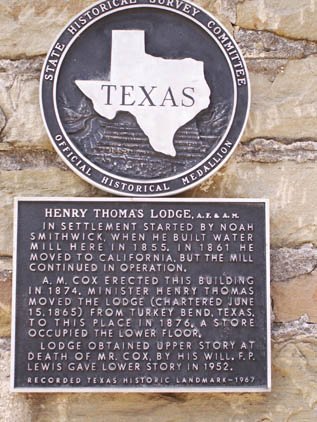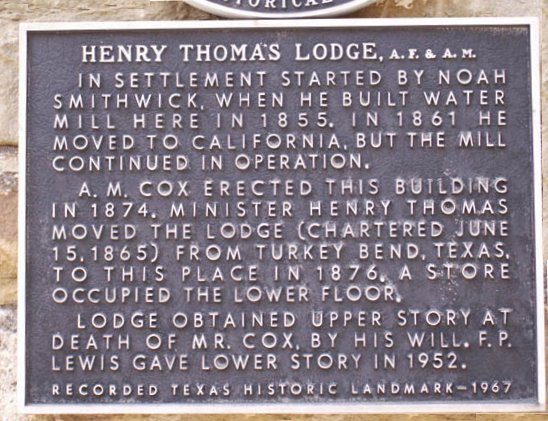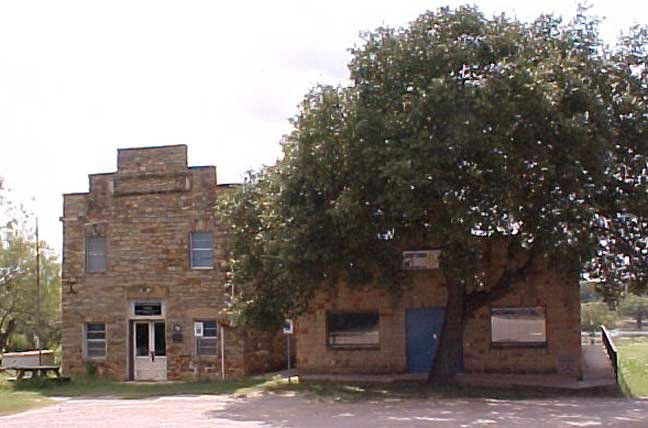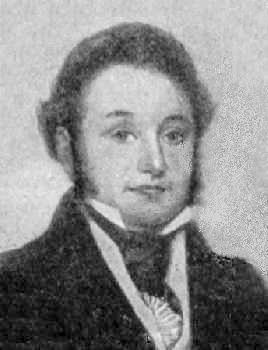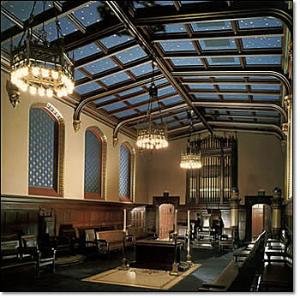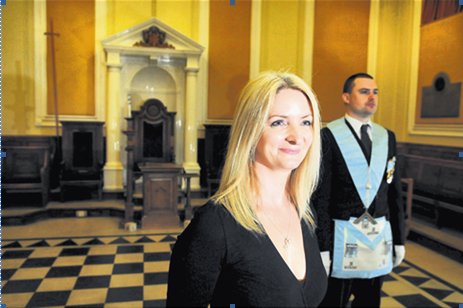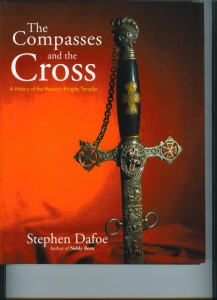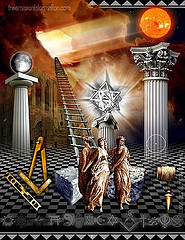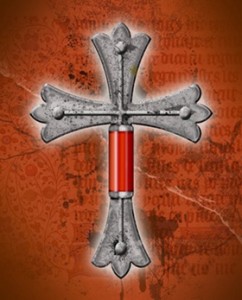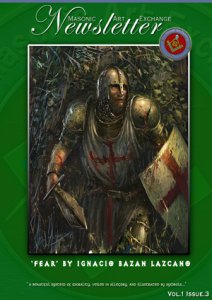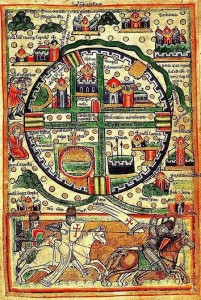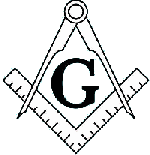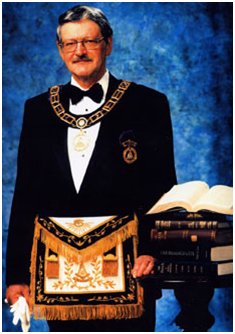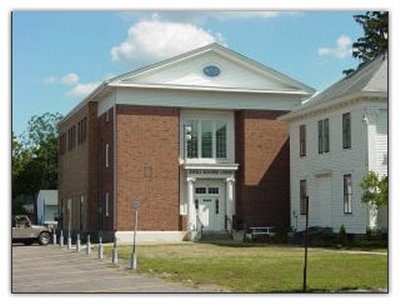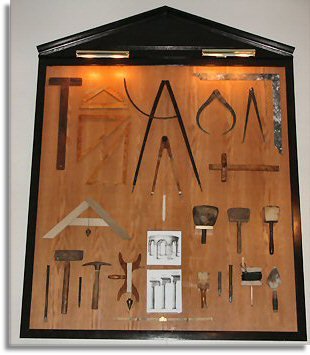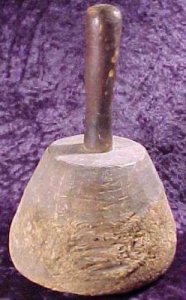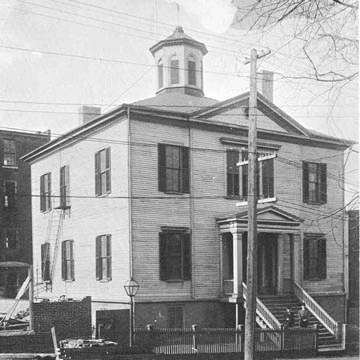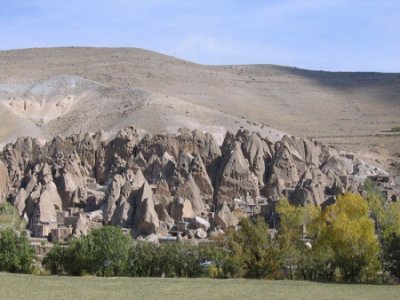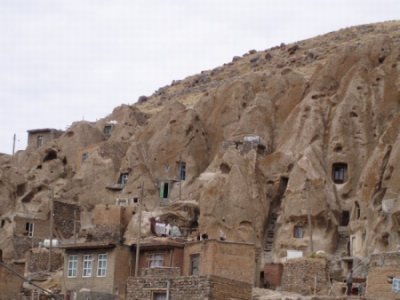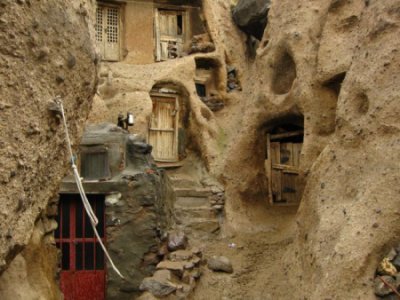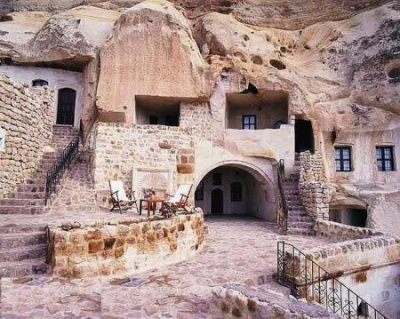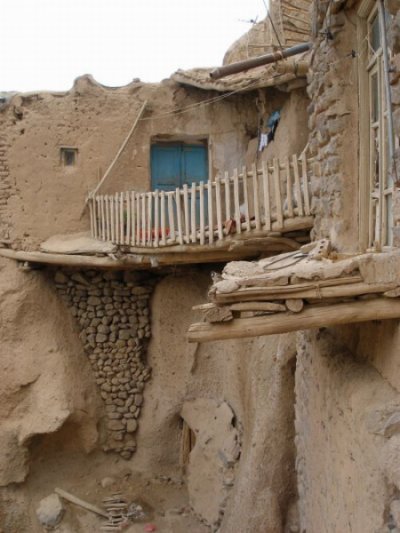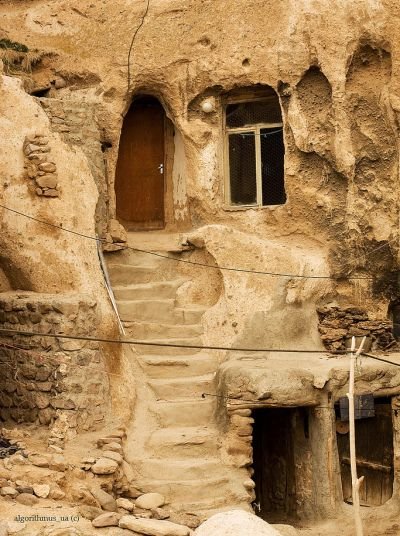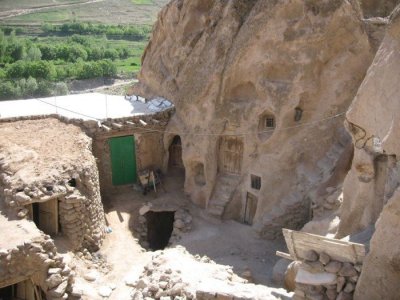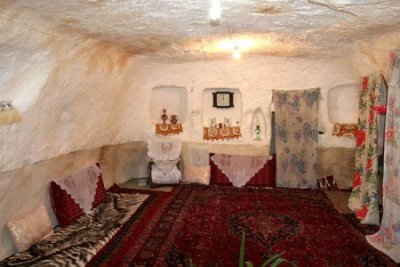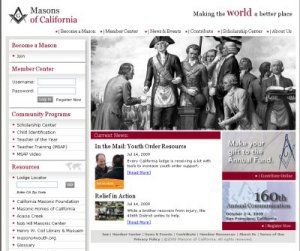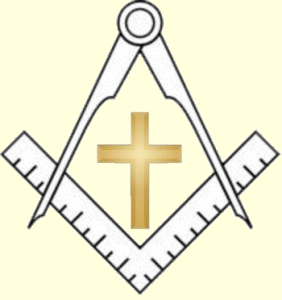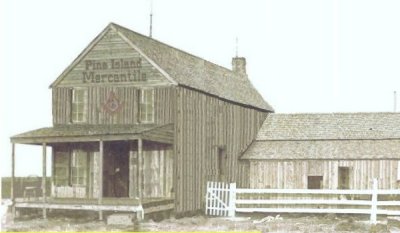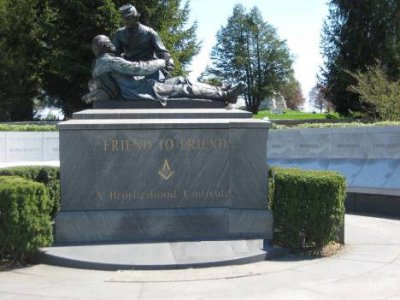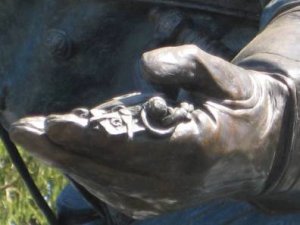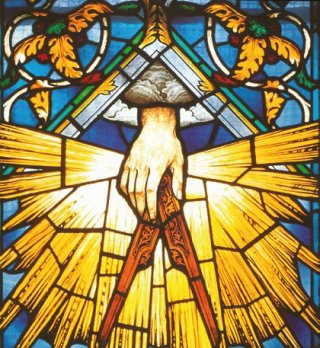
|
October 2009

Henry Thomas Lodge #278 AF & AM
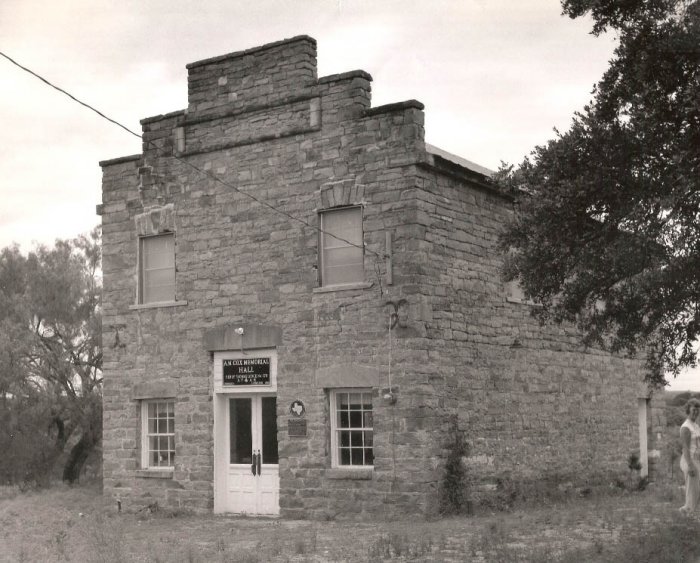 The Henry Thomas #278 AF & AM in Burnet County |
|
Page II | |||||||||
|
This Small Town Texas Mason's E-Magazine is not affiliated with any state Grand Lodge or individual Blue Lodge. It was created to enlighten, educate and entertain Masons and non-Masons alike. The beliefs, ideas and opinions expressed here are strictly those of the authors and not necessarily those of any individual Blue Lodge or state Grand Lodge. As title suggests, each issue will feature a small town Texas Masonic Lodge and some Texas Masonic history or hero in each issue
A very sincere effort was made to avoid using any copyrighted material, without permission or giving credit to the author, in the creation of this web site. If you discover something that is yours, without giving you due credit, please let me know and due credit will be given or the item will be replaced.
Any material in this site may be used to increase the understanding of Freemasonry.
Story tools: |
Henry Thomas Lodge #278 A.F.& A. M.
Texas Masonic History
- Lorenzo de Zavala
What will Freemasonry Offer My Son?
"The Freemasons make a comeback, of sorts
The Mysterious World Of A Freemason's Wife
The New Age Of Masonic Expression And The Continued Excellence Of David Naughton-Shires
Do You Have To Believe In God To Be A Freemason?
Anoka Masonic Lodge will mark 150 years
The First Shot Of The Texas Revolution - "Come and Take It"
Nation's Oldest Masonic Hall Is Richmond Lodge
Troglodyte village in IRAN 700 years old
Legal Action Could Lift The Lid On Northern Ireland's Freemasons
An Answer to Anti-Masonic Religious Propaganda
The Purpose of Grand Lodge and Lodge Web Sites
Trial Date Set in Haas v. Grand Lodge of WV
Masons at the Battle of Gettysburg
| ||||||||
|
I happened to check my emails about 6 hours after Brother Carl's posting and thought I was being attack by a hacker. There were 26 emails from Brothers that wanted to be added to the subscriber list. Then I found Brother Carl's email and understood what happened. In the 3 weeks since Brother Carl's posting, I have added a total of 60 new subscribers to the list.
Thanks to everyone for your support and helping to make this magazine a success.
|
|
Page IV | |
Lorenzo de Zavala
Lorenzo de Zavala died of pneumonia at his home on Buffalo Bayou on November 15, 1836.
* From The Texas Mason
By Pete Normand, PM
Texas Lodge of Research
| |
|
By Brother Tim Darnell Reprinted With Permission Of The Editor At Masonic Information
Fatherhood can change your perspective in a hurry..
I realize that's probably the biggest understatement in history, but our six-year-old son has got me thinking about a lot of things.. Mainly, I wonder what Freemasonry will look like as he grows up, and if it will offer anything to him and his truly 21st century generation.. Will our local lodges finally be permitted to undertake the actions that other organizations do to recruit and retain members, or will our leaders continue to restrict and stifle us with their antiquated philosophies of membership?. Will our few young members and officers continue to think outside the suffocating boundaries of tradition and develop new outlets of community involvement? Or, when they see so few brothers of an already sparse roster of members support them, will they succumb to an overwhelming sense of frustration and discouragement? Will we at last choose forward, progressive-thinking Grand Lodge officers, or will this line of dedicated and selfless Masonic devotees continue adhering to cobwebbed philosophies of the past that would crack and fracture into dust if shown the light of modern day?. Will we ever welcome men of color into our lodge rooms, or will we hold true to ancient prejudices, bigotries and intolerances that have no room in the Masonic conscience whatsoever?. My son is now in school. When he's old enough, will he be able to join a DeMolay chapter – as his father did – and be exposed to the Biblical principles of brotherhood, honesty, charity and courtesy, or are those Rockwellian notions merely romantic shadows of a vanished society? Of all the organizations that Freemasonry sponsors, the young men of DeMolay face the changing world more than any, and yet we still frown upon the admission of other cultures. Will the many organizations of which I'm involved, with their declining rosters and seemingly apathetic constituencies, survive long enough for him to enjoy their benefits? Finally, will he even have a desire to do so, or merely regard them as musty relics of a long-past civic existence in which his father once found satisfaction and fulfillment?. I am different from many members of my generation. Unlike many others, I joined my lodge as soon as I became of age, following in my family's Masonic footsteps. My father, both my grandfathers, and two uncles were Masons (one uncle was Worshipful Master of Chamblee Lodge, and presided over my Entered Apprentice degree). My mother and grandmother were standard fixtures at lodge events. At 29, I was the youngest Master in my lodge's then-100-plus-year history. And yet, the issues facing our fraternity do not center themselves around age or generation gaps. During my year in the East, the brother with whom I shared more common beliefs and observations was 40 years older than me.. I look at Freemasonry's dwindling attendance and interest, and I wonder. In a fraternity so obsessed with antiquated rituals of the past and so intolerant of the future, who will ensure that our lodges survive for our sons?.
Or will anyone even care to do so? .
Tim Darnell
|
|
PageV | ||
By Father Tim
From The Irish Central
The Freemasons, the group that is at the center of more conspiracy theories than any other in history — perhaps even more than the Catholic Church — have made another comeback of sorts in Dan ("The Da Vinci Code") Brown's new book, "The Lost Symbol." And as if this wasn't enough, a lawsuit in Ireland is beginning to excite the world with the prospect that the secrets of the organization will finally be revealed.
I don't imagine that this disclosure would be looked upon kindly by Freemasons. It's not much fun being part of a secret organization with its own rituals and initiations and handshakes if it's suddenly not secret. But I think it would be wonderful to finally know what makes the Masonic clock tick. (It would be nice to know what makes the Vatican tick, too, but we'll leave that for another time. And an author besides me!)
I hasten to add that the best-selling "Lost Symbol," like all Brown's works, is a novel. It is a work of fiction, and one by a very talented, creative and successful writer. I have read them all, mostly enjoyed them, and I intend to read this one as soon as a copy makes its way to the mission center.
If you're Catholic, and especially if you're Irish Catholic, you know that Masons hate us, and always have. So, we hate them. You know that they are conspiring against us, and have some sort of plan for global domination they have been working on since they started all this in the 16th Century. So far, the plan hasn't worked out so well, but global domination takes time. You also know that almost all the rich and powerful men (women aren't allowed) in the world are Masons — all the better to dominate the world, of course.
In my family and my extended Irish clan, mentioning the Masons, or even walking on the same side of the street as one of their lodges that was on my way to elementary school, was a major no-no. Back then, it would have been easier to talk about sex in an Irish Catholic household than chat about the Masons.
I did the unthinkable when I came to New York to attend college and soon after, follow my vocation: I visited a Masonic lodge. I remember making a conscious decision not to wear my Roman collar for the visit; I'm not sure what I thought would happen, but Irish Catholic guilt has a long shelf life, and I thought I should play it safe lest I fall through a trapdoor or wind up in a hall of mirrors or in a room of doors with question-marks on them — one of which I would have to choose to open.
None of this happened, and I have lived to tell the tale.
In a way, the lodge building is a perfect metaphor for what we know — or really, what we don't know — of the Masons: The outside gives no hint of the inside. It keeps its secrets. It is a book that cannot be judged by its plain cover.
But the Masons certainly have been judged, and found guilty by just about everybody.
Most Christian churches, and especially the Roman Catholic Church, condemn them, believing that they are a religion with its own "God," or, in the words of the Church, the Masons have a "deistic" set of beliefs that are contrary to Christianity and are heresy. For a while, even the Society of Jesus, of which I am a member, was thought to be part of the worldwide Masonic cabal (We're in the clear, now. I think...). Today, if a Catholic becomes a Mason — the Masons have no issue with this, by the way — he could not receive the Sacraments. In fact, until 1983, he would have been excommunicated. While many thought Vatican II's reforms would mean a thaw in this cold war, anti-Masonic Church policy was clearly restated by, coincidentally, the man who is now Pope, Benedict XVI.
The Catholic Church usually takes the rap in the modern world for going its own judgmental way on issues like Freemasonry, accused of condemning what it doesn't understand — but in this case, we have, and have had, plenty of company. And not just our fellow religions! Many 20th and 21st Century regimes have been lined up against them, too. Adolf Hitler and the Nazis, Communists, Fascists, Saddam Hussein, and even the terrorist Hamas organization have all condemned or still condemn Freemasonry.
To say the least, these aren't the Church's usual bedfellows, and like it or not, "our side" has even more odd allies.
The Masons are a favorite of conspiracy theorists, who have said all U.S. Presidents were Masons (actually, just 14), that they orchestrated the assassination of President Kennedy, faked NASA missions, are behind the Ku Klux Klan and Yale University's Skull and Bones society (which President George H.W. Bush was a member of), and that Jack the Ripper was a Mason whose murders were Masonic rituals. Yes, even 9/11 makes it into the list. There's lots more, but you get the idea.
What to make of all this?
As I simply don't believe there is evidence that this strange, ancient organization represents a threat to humanity, religion, spirituality, or peace -- and certainly not Our Loving God — I am content to let them go their way, as we go ours. So far, that approach seems to have worked out just fine. I don't understand them, and I'm not sure that even the Vatican theologians who have studied them for centuries — and they are far more-schooled and studied than I in this kind of painstaking research — do, either. Yet, we condemn, as do many. Are we right to do so, when we know so little?
In the later part of his life as a speaker and lecturer, the great Mark Twain often told a satirical story about Satan's "predicament." It makes a point, and it's worth a replay:
"I have no special regard for Satan; but I can at least claim that I have no prejudice against him. It may even be that I lean a little his way, on account of his not having a fair show. All religions issue bibles against him, and say the most injurious things about him, but we never hear his side. We have only the evidence for the prosecution, and yet we have rendered the verdict! To my mind, this is irregular. It is un-English. It is un-American. IT IS FRENCH! Without this precedent, Dreyfus could not have been condemned. As soon as I can get at the facts I will undertake his rehabilitation myself... It is a thing we ought to be willing to do for anyone who is under a cloud. We may not pay him reverence, for that would be indiscreet, but we can at least respect his talents! A person who has for untold centuries maintained the imposing position of spiritual head of four-fifths of the human race -- and political head of the whole of it — must have executive abilities of the loftiest order. I would like to meet him. And I probably will..."
God bless you all!
|
|
Page VI | ||
|
Reprinted Here with permission of the author Rowan Mantell
And until now, even their own wives were often outsiders.
But when Philippa Faulks' husband decided to become a mason, she wanted to know more.
"A lot of the wives I spoke to either had no idea what it was all about, or didn't want to know," said Philippa, known as Pip.
Pip, of Bungay, very definitely did want to know. She was already fascinated by the history of magic and when her husband, Martin, began finding out more about freemasonry she became more and more interested. "I was quite jealous really," she admitted.
Every time Martin returned home from a meeting she quizzed him about what he had seen and done, intrigued by the rituals, the costumes, the philosophy - and the myths and misconceptions.
Now she has written a book about freemasonry - aimed at other wives.
"It's for wives, partners, friends, family, potential freemasons…It's a very basic outline of what freemasonry involves," said 40-year-old Pip, who has previously written books on meditation and magic.
Philippa with her book. Photo: James Bass.
"I think it was the history that drew me in first," she said. "Over the last century there was a heck of a lot of persecution of freemasons, which reached a peak with Hitler. The majority of people don't know that Hitler hated freemasons as much as he hated Jews and gypsies."
Then, as Martin progressed through the various stages of initiation she gleaned as much as she could of modern day masonry. "I must admit, it was like 'go on, go on…' whenever he was talking about it!" she said.
And Pip found she liked what she was learning. "It's about teaching men to be better men," she said. "It's not some kind of sinister gathering where they conspire to rule the world. The truth is that they sometimes find it hard enough to run a meeting!"
Martin joined when he was only 25. Seven years on, he is still the youngest in both his Lodges (or groups of masons). For him, freemasonry is very definitely a force for good.
"It's like boy scouts, but on steroids!" said Martin. "I first read about free-masonry as a teenager. The idea of this secret society that had been instrumental in promoting, learning and science and freeing slaves…For me these secret, virtuous protectors of the universe were so cool, and they've even got a super-hero uniform!"
Martin now works for a masonic publisher but his colourful past includes being a schoolboy martial arts champion, an escapologist, hypnotist and a member of the Magic Circle. Indeed, as a student of ninjitsu he can call himself a ninja.
It is the ritual, history, training and brotherhood of freemasonry that fascinates him. He believes the formal initiation ceremonies are, like many martial arts, another path towards self-improvement.
"For me they are so beautiful and inspiring," he said. And he loves the shared experience of masonry, and finding out who else is involved.
"I will do a handshake, or quote a little bit of the ritual, but I find just asking 'Are you a freemason?' works well!" he said.
Masons, and there is a clue in the name, are thought to have started out as stone-masons. Many of the rituals and symbols can be traced back to the medieval stonemasons who built our great churches and cathedrals.
As they travelled around Europe they developed a code to demonstrate their level of skill, protecting their craft with secret signs and passwords. Many of these were focused around the only building described in detail in the Bible - King Solomon's Temple.
That is the basis of the Temple used by freemasons today.
And even today a mason must believe in a "supreme being" (although not necessarily the Christian or Jewish God) who is called the Supreme Architect.
The Norwich Temple is deep within a grand building on St Giles.
The huge, ballroom-sized space is surrounded by wooden pews, looking on to a black and white chequerboard floor. Right at the centre of the high panelled ceiling is a big golden G - variously believed to represent God, or geometry, or even goodness.
Masonic symbols abound - the square and compass of the medieval stone mason, a block of rough stone and cube of highly polished marble, representations of ancient building tools.
And during formal meetings the masons will be dressed in their regalia - aprons and collars, adorned with medal-like "jewels".
"I got a lot of 'Why will you put on an apron for them but not put on an apron at home?'" said Martin.
Alongside the heritage from the Old Testament and medieval masons, is a theory that freemasons had to become even more secretive because they believed in religious and political tolerance, and equality (at least of all men).
Even today, formal meetings are still guarded by a ceremonial look-out, plus a man at the door with a sword and another outside with a dagger.
There are thrones for the chief masons representing the sun and the moon and it is here that the ceremonies are carried out - ritual dramas which new masons must learn and re-enact. In the first, the man is blindfolded and has a noose placed around his neck and is taught never to reveal the secrets of masonry.
"They make you question what you are doing in the world, and make you want to do your best, and there are parts of the ritual which do take some guts to get through," said Martin.
And while some of the ritual is still kept secret - parts have entered into common parlance. Giving someone "the third degree" refers to the third initiation ritual, which deals with the inevitability of death.
And masons vote on admitting a new member using glass balls like marbles. Each mason puts a marble in a box, with a black ball a "no" vote.
The sense of mystery and strangeness is intensified by the use of old paintings or "tracing boards" in the ceremonies.
As Alan Fairchild, information officer for the Provincial Grand Lodge of Norfolk, dragged a selection from a storeroom, the Norwich temple filled with pictures of skulls and skeletons, stylised trees, figures with swords and arrows and hour-glasses, huge eyes, broken buildings and the tools of stonemasonry. They are two centuries, or more, old but have strangely futuristic dates because freemasonry counts its years from King Solomon's time. One reads AD5811, amongst the semi-erased symbols and skeletons.
It's all very Dan Brown,
So has the mass of interest in Dan Brown generated more curiosity about freemasonry?
"Very much so," said Pip. "I think it has opened up a new wave of interest that has generated both positive and negative feelings towards the craft. It has made it seem more mystical to some, which again has had a double edged effect. One great thing about writing The Handbook for the Freemason's Wife, was being able to dispel the majority of ridiculous and often downright damaging myths that have surrounded Freemasonry for so long."
As she researched freemasonry, and watched her husband being drawn into its ancient embrace, Pip fell for its combination of mystery and brotherhood. "I love freemasonry! I believe it is a powerful force for good in a society that has really lost its way," she said.
And she admitted: "I often wished I could do it too."
She has considered joining one of the break-away European lodges which welcome women members and has written another book about the self-styled masonic magician who helped found them.
But she does not resent being excluded from the English masonry. "It doesn't really bother me as the whole system of freemasonry per se is geared up towards making men better men," she said.
· Philippa Faulks wrote A Handbook for the Freemason's Wife with fellow freemason's wife Cheryl Skidmore. It includes explanations of the words and symbols used by masons plus information on the ceremonies, aims, roles, history and charitable work of freemasons. It is available locally from Waterstones and from publisher Lewis Masonic at www.lewismasonic.com
|
|
Page VII | |||||||||||
|
And The Continued Excellence Of David Naughton-Shires Reprinted With Permission Of The Author Brother Frederic Milliken - The BeeHive At Masonic Information
When I first started expressing myself in Freemasonry the medium that I used was the one which all the great old Masters of Masonic scholarship used – the word, the printed word. So I wrote many words, words of explaining, of informing, of changing, of reform – so many words. Isn't that what every Masonic author does – conveying his or her messages in many words?
.
Pictures without words allows the observer's imagination to wander off in a hundred different directions at once. There is not enough structure for the artist to be sure that the receiver understands the message that he wishes to convey. When words and pictures are used together the mind can be brought back into a narrower focus on what the author is trying to convey, yet there is room for the reader to personalize the message and through the powers of imagination carry it into his or her own life experiences.
Nobody knows this better than David Naughton-Shires. He may be the newcomer to the scene but he is following in the footsteps of Dafoe and Stewart. He understands, as they do, how important the use of all the human senses is in the creation of the work of an artist. He realizes that in order to get one's work recognized, a creator has to appeal to the observer in many different ways. It is my humble opinion that Naughton-Shires is no newcomer to the knowledge of these facts nor is he new to the ability to produce such integrated work but that it has been his involvement with Freemasonry that is new to him and that has unleashed his creativity and ability into actual great creations and enabled his work to be noticed. And that is because, in my opinion, the power of the symbolism of Freemasonry is so great, so strong and so conducive to the creative artist being able to express himself that it just opens an artist's creative juices to full flow. Freemasonry is the best platform from which to create great works because of its great symbolism, its long history spanning centuries, and its message of passion for nobleness, righteousness and equality. There are very few other settings that are as conducive to opening up the greatness of an artist.
That being said Naughton-Shires is proving he is no flash in the pan, no fluke, no 90-day wonder. Rather what I see is continued growth and depth of presentation in his work as demonstrated by his latest Issue 3 of The Masonic Art Exchange Newsletter. He has adopted a Knights Templar theme for the next four or five issues and this Newsletter is sort of an introduction to Templar art. Naughton-Shires asserts: The cover page of this issue is a compelling picture of a Knight Templar called “Fear” and painted by the brilliant Argentinean artist Ignacio Bazan. And Naughton-Shires outstanding feature article in issue #3 is titled, “The Art of The Knight Templars: Artistic Representations of The Crusader Knights of God.” In it he features the story and work of Benedictine Monk Mathew Paris and a plethora of early Templar art. Later issues will feature more modern Templar paintings and drawings.
There is one picture in the article that really caught my eye. It looks like a tapestry and features green and orange colors. I couldn't quite make out what was going on in what looked like a story of some kind in pictures. Naughton-Shires explains what he knows about this work of art: There is also an Apron article in this issue and some other tidbits not available for viewing at the time this article was written. But then again, I wouldn't want to tell you all the good things in Issue #3 of The Masonic Art Exchange's Newsletter. Better you should go find out for yourself.
And as you do that note where Masonic scholarship seems to be going. We are entering a new age of Masonic Expression, one where the visual arts vault into first place ahead of the word. And leading the charge is Naughton-Shires carrying the torch from Dafoe and Stewart who are shoo- ins for the 21st Century Masonic Hall of Fame. Sometimes the pupil surpasses the Master but that remains to be seen. Naughton-Shires is still climbing the wall of stardom. It might behoove us all to grab onto his cable tow and let him pull us into greater heights of Light and once in awhile in the rough places, the precipices that do not hold, for some of us to pull him up and out. The journey together, the journey shared is very rewarding. Naughton-Shires is beckoning for you to come along for the ride. My advice is do it and don't look back.
|
|
Page VIII | |
|
By Kris Hartung
Boise Secular Humanist Examiner Part I
“MONOTHEISM is the sole dogma of Freemasonry. Belief in one God is required of every initiate…” However, when we dig deeper into this so-called “God” requirement," there arises a more interesting point, namely that Freemasons do not require a potential candidate to explain or clarify what he means by “Supreme Being,” “God,” or what we eventually see referred to as “The Grand Architect of the Universe” (G.A.O.T.U) by Freemasons. This is often explained to new candidates in person when they are interviewed by an investigative committee, typically consisting of three Master Masons. The committee asks the new candidate whether he believes in a Supreme Being, but before he answers the question they explain that he does not have to define or elaborate on that belief. In other words, the meaning of "Supreme Being" is to be kept personal and private to the new candidate of Freemasonry. In fact, discussion of religion in most U.S. lodges is forbidden. This qualification, or what we can consider the “escape clause” for the freethinker, is also evident in Masonic literature, again, from the following passages of one particular Monitor:
“…but his conception of the Supreme Being is left to his own interpretation. Freemasonry is not concerned with theological distinctions.” So the question that comes to mind for those who do not believe in the traditional Judeo-Christian or Islamic concept of God is: How can a new candidate of Freemasonry honestly reject the belief in a Supreme Being, yet still satisfy the "God requirement"? After all, the Masonic literature states clearly that no atheist can become a Mason. One of the most authoritative documents in Masonry is Anderson's Constitutions of 1723, in which he goes as far to say: “A Mason is Oblig'd, by his Tenure, to obey the moral Law; and if he rightly understands the Art, he will never be a stupid ATHEIST…" (Anderson's Constitutions of 1723, Masonic Service Association) The basis for the freethinker to address the "God requirement" has to do with semantics and is also hidden in the second point above, namely that Freemasons do not require new candidates to explain what they mean by “Supreme Being”. There are many different meanings of this phrase, aligned to radically diverse worldviews. Certainly, some have defined "God" or "Supreme Being" as the forces of nature, the energy of the universe, or even the universe itself, which is pantheism and arguably atheism in disguise. Einstein used to use the term "God" in his writings, yet he also said in one letter that he was an atheist, relative to the Christian doctrine (Albert Einstein, letter to Guy H. Raner Jr, July 2, 1945, responding to a rumor that a Jesuit priest had caused Einstein to convert from atheism; quoted by Michael R. Gilmore in Skeptic, Vol. 5, No. 2), and in another letter that he believed in the god of Spinoza, which is a form of pantheism. Additionally, we must not underestimate how little we know about the history and meaning of Freemasonry, especially prior to 1717. No one truly knows what Anderson meant by the phrase "stupid atheist," which leads to the possibility that he may have been differentiating between types of atheists. In fact, we do know that there were many agnostics, deists, pantheists, and atheists, who were Freemasons during the Age of Enlightenment and during the formative years of the fraternity. These Masons were members of official and "regular" lodges, which sheds doubt on the assumption that Anderson had intended non-believers to be prohibited from becoming Masons. Part II The second explanation to why non-believers can be Freemasons has to do with the history of Freemasonry and the fact that there are two forms of Freemasonry alive and well today. Most people, and even many Masons, are not aware of the history behind this split in Freemasonry. After the Grand Lodge of England was created in 1717, a schism occurred among Masons. Those who were aligned to the original Grand Lodge of England called themselves the "Moderns", and in 1751 a group of more conservative Masons decided to create a new Grand Lodge and call themselves the "Antients." Between 1717 and 1751 many lodges were constructed all over Europe and the United States. Among those in Europe, was the Grand Orient of France, which was established in 1733 and was more aligned to the "Moderns." In 1813 the "Moderns" and "Antients" in England reconciled their differences and unified into one Grand Lodge of England, but after this point, one can argue that the Grand Lodge and many of its chartered lodges dispersed throughout the world were firmly rooted in Judeo-Christian principles and rigidly enforced the "God requirement."
The second schism of Freemasonry occurred in 1877, when the Grand Orient of France broke free from "Antient" Masonry and established its principle of "Laïcité," which implied freedom of thought and expression, the elimination of the "God requirement," the acceptance of Women Freemasons, the true secularization of Modern Masonry, as well as other modern worldviews and values. At this point, the "Antients" claimed that the Grand Orient of France was an "irregular" form of Freemasonry and refused to recognize them as part of the Fraternity. But this did not stop the Moderns. Despite the fact that the Antients or Anglo-based Masons have dominated the fraternity around the world, this more conservative form of Masonry is experiencing radical decline of members, and Modern Masonry is building momentum. As of 2008, a Treaty of Amity was signed between the Grand Orient of France and a set of Modern Lodges in the United States, resulting in the Grand Orient of the United States (GOUSA). Since then over 14 Modern Masonic lodges has been created, with many more on the way. These Modern Masons intend to rebuild the way Freemasonry was practiced and construed during the Age of Enlightenment, as primarily not a Gentlemen's or "good ol' boy's" club, but men and women who value reason, science, education, freedom of thought, separation of state and church, natural philosophy, and above all liberty, equality, and fraternity. More importantly, and related to the question posed by this article, Modern Masonic lodges, just as the Grand Orient of France, do not require that new candidates believe in any form of Supreme Being or God. |
|
Page IX | ||||
By Mandy Moran Froemming Union Editor
Next month the fraternal organization will mark a century-and-a-half since its charter was established, the 30th lodge in the state of Minnesota. “The idea of all men being created equal is a basic Masonic principle,” said current master, this year's lodge leader, Wayne LaMusga. “Also, that all religions are created equal.” He said that Freemasonry often is confused as a religious organization. “All faiths are welcome to join us in a peaceful organization,” he said. “We're the oldest fraternal brotherhood.” And since 1859 those brothers have been meeting at the Anoka Lodge in search of personal betterment and connection with men in their community with intellectual and spiritual enlightenment. The fraternity boasts more than five million members worldwide. About 10 to 12 new men join the Anoka Lodge every year, joining a brotherhood of men who are interested in meeting new people, learning about the ideas of others and at the same time studying the history and formation of the United States and the world. The lodge's membership spans Anoka County and the north metro. But like most long-standing organizations, the Masons are not immune to the struggles of attracting new members and keeping connected with the community.
Community event In an effort to make those community connections, a public event is being held Saturday, Sept. 12 at the Anoka Masonic Lodge on Third Avenue in downtown Anoka. Everyone is invited to attend “Ribs, Bibs and Blues,” a slow-cooked rib feast paired with musical entertainment and tours of the lodge. The rib dinner comes with baked beans and coleslaw. Serving will start at 2 p.m. and last as long as the food does. The event is scheduled to be wrapped up by 6 p.m. The lodge's own barbecue aficionados, Kirby Olson and Jerry Oliver, will be testing their skills and tempting taste buds. There is no charge for the lunch, but a free will offering will be taken with all funds going towards the ACBC Emergency Food Shelf. “We stepped out of the public eye about a generation ago,” said LaMusga. “We're trying to get back there.” The celebration will take place in the city lot, adjacent to the lodge, at 1900 Third Ave. S. in Anoka. The brotherhood “We have secrets, but we're not a secret organization,” said LaMusga. And according to the Masons, the ability to keep a secret is the test of a man and a testament of his character. Most of those secrets are in reference to the rituals, passwords and handshakes that will gain a Mason entrance into another lodge, according to member John Freeburg. The compass and the square are the emblems of the Masons, closely connected to operative Masons, who started the Masonic movement and worked in the trades. Being part of an organization boasting 150 years of longevity has special meaning for its members. “I don't think that I had a real grasp of history until I got active (with the Masons),” said LaMusga. “It has instilled a sense of history and an appreciation of history to see what really went into to making of our nation.” But he also said that history needs to be shared with the community. “It's too easy to stay in our lodge and do our degrees,” he said. “We need to step out in our community and make the community aware we have this history.” Freeburg does note that not everyone is supportive of Freemasonry. Some are suspicious of the organization's secrecy and liberal religious beliefs. Looking back According to a 1984 article in the Anoka County Union celebrating the lodge's 125th anniversary, the Anoka lodge's roots were in a group of men looking to better themselves. “At the turn of the century you would have seen much of the Anoka area's establishment, men who were judges, chiefs of police and business owners, who had membership in the lodge,” Freeburg said. While 150 years might seem like a long time and it is the oldest group of its kind in Anoka County, the Grand Lodge organization of Masonry began in June of 1717 when four lodges of Masons met in a tavern in London, England. Minnesota Masonry began in August 1849 when the St. Paul Lodge 223 was granted dispensation by the Grand Lodge of Ohio. The original charter for the Anoka Lodge #30 was granted Oct. 25, 1859 with Owen Evans as the first master. Other officers were Josiah F. Clark, John H. Martin, Jacob B. Lufkin, James H. Colbath, Nathaniel Small, Isaac P. Strout and Harvey Richards. Four additional charter members were Francis Thorndike, Dwight Woodbury, George Small and Edward Cundy.
But on display at the lodge is one artifact, which Freeburg believes may have survived the fire. It is the emblem of the Masons, the compass and the square, with one of the compass tips broken off and the nickel finish burned away. It was found in a Cutter family home and Freeburg said it likely belonged to Oscar Cutter, a former master of the Anoka lodge. “It is probably a surviving piece of hardware from the great fire that he pulled out of the ruins,” said Freeburg. The artifact is near and dear to the Masons, he said. According to lodge records, the following highlights were noted over the years: • In 1886 annual dues were $2. The cornerstone of the current building on Third Avenue, which has undergone changes over the years, was laid in 1922 by grand master Herman Held.
|
|
Page X | |
Continued From Page IX Members join legacy Both LaMusga and Freeburg had their initial connection with the Masons through their fathers. “I thought it was a great platform to meet other men I wouldn't have met otherwise,” said LaMusga, who was also attracted to the Mason's philosophy of all men being created equal. For Freeburg, who is a history buff, he says he is connected to the Masons' roots in the founding of the United States. Men like George Washington and Ben Franklin were members of the Masonic Lodge.
But the two things never discussed are religion and politics. During their tenure as members, Masons move through the ranks of the organization by earning degrees, to eventually become a master Mason. The Anoka Lodge #30 has produced one grand master of the state's Masons. Ham Lake's Rodney Larson was named to the post in 1994, serving a one-year term. Affiliated organizations Connected with the Anoka Masonic Lodge #30 is the Order of the Eastern Star Martha Chapter 132, a women's group for wives, sisters and daughters of Masons. The OES locally is active in quilting for cancer patients and volunteering at the University of Minnesota's cancer hospital. Job's Daughter's Bethel 48 Chapter also meets at the Anoka Lodge. This group trains young women in leadership roles. Since the 1980s another group of Masons, Northeast Lodge #345, has been meeting in Anoka since losing its space in New Brighton. This is a smaller lodge, with approximately 50 members. Philanthropy While the Masonry is not designed to specifically be a charitable organization, Freemasons are certainly responsible for many charitable acts. The Minnesota Masons have the distinction of giving the largest gift ever to the University of Minnesota for cancer research and treatment. Last spring the Masons made a $65 million commitment from Minnesota Masonic Charities. Their support over the last 53 years has totaled more than $100 million. In recognition of this gift, the University of Minnesota Cancer Center will now be called the Masonic Cancer Center, University of Minnesota. The gift will be contributed to the university over the next 15 years. In the past, Masons honored members of the brotherhood with the purchase of a floral wreath. But in 1981, the lodge decided a more fitting memorial would be to use the money to award one or more $300 scholarships to graduating seniors from the Anoka-Hennepin School District.
Mandy Moran Froemming is at editor.anokaunion@ecm-inc.com
| |
|
"Come and Take It" From The Grand Lodge Of Texas Web Site
In mid September 1835, Mexican General Cos landed in Matagorda Bay and proceeded overland to Bexar. This was the first step toward disarming the people of Texas, and to secure a four-pounder cannon which had been placed at Gonzales by the Mexican Government for the defense of the settlement against the Comanches. His demand for the cannon was refused by the colonists and a detachment of about one hundred Mexican Cavalry under the command of Lieutenant Francisco Castonando was sent to take it back. Upon arriving near Gonzales, on September 28, 1835 a small company of eighteen Men, (six of them Masons- Winslow Turner, William W Arrington, Valentine Bennet, Almeron Dickinson, G W Davis, and Charles Mason) “The Old Eighteen”, held the Mexican force at bay until reinforcements could arrive. On October 2, 1835 a battle was fought, witch has been called the Lexington of the Texas Revolution.
GONZALES MASONIC LODGE NO. 30 A.F. & A.M. WELCOMES
GRAND MASTER W. DAVID COUNTS, JR.
Friday, October 2, 2009
You're invited to a casual dinner with the Most Worshipful Grand Master of Texas and other Grand Lodge Officers that will be held at the Gonzales Elk's Lodge on Friday, October 2, 2009 at 7:30 P.M. A roast beef meal will be provided at a cost of $8.00 per plate. There will also be a presentation of the “Key to the City” to the Grand Master by the Honorable Brother Bobby O'Neal, Mayor of Gonzales. If you plan to attend please RSVP to Joey at moss@gvec.net or Blake at blakebowden@mac.com or, call 830-857-6118 and leave a message by no later than
Friday, September 25th.
Registration begins under the “Food Tent” in downtown Gonzales for the Motorcycle Fun Run.All registration proceeds will be forwarded to the Masonic Retirement Home.
9:00-10:00AM Texas Heros Square-Downtown Gonzales
Gonzales Masonic Lodge No. 30 will host Grand Master W. David Counts, Jr. official visit at the annual "Come And Take It" Celebration. All are encouraged to attend and commemorate the Masonic Heroes in the Texas Revolution and The Republic of Texas.
10:00-12:00PM Come and Take It Parade Begins
M.W. Grand Master W. David Counts, Jr. and numerous Grand Lodge Officers will be participating in the Come and Take It parade. We invite ALL CURRENT Worshipful Masters and District Deputies that are in attendance to ride on a float with the Grand Lodge Officers.
1:00PM Motor Cycle Fun Run Begins
The Fun Run will begin at the Gonzales Masonic Cemetery. Additional information will be provided a the time of registration.
|
|
Page XI | |
By Horace A. Hawkins
Built in 1785, Financed by Lottery,
Nearly 150 years ago--1785 to be exact--the Masons had begun the undertaking of a hall for their own use, and it is of record that they encountered many obstacles. This old building was built and used exclusively for Masonic purposes from the date of its occupancy to this good day, with a few exceptions. The building at times was used by the Hustings Court of the City of Richmond when the regular courtroom was used by a higher court. It was also the resort for the ultra-fashionable people of early Richmond to hold parties, balls and various other social meetings in the then spacious structure. With these exceptions there has never been in the ancient building other than Masonic gatherings. It is doubtful if there is another Masonic building in America which has had beneath its roof as many distinguished men. The late King Edward of England, then the Prince of Wale, was among the visitors, as was also General George Washington, General LaFayette and his son, George Washington LaFayette, and several other Frenchmen--all of whom were formally elected to honorary membership in Richmond-Randolph Lodge. Richmond Lodge, No. 10, several years ago disposed of its interest in the property so that now it is the sole property of Richmond-Randolph Lodge. When the building was first constructed it was in the midst of Richmond's leading business houses and on the fringe of the bon ton residential section, for 150 years ago the city had not reached much further than what is now Fifteenth Street for its western boundary. The building itself is unique in that it is a perfect cube and the lot on which it stands is also a perfect cube, which Masons will understand. Today its surroundings are not what they were in the good old days--factories, warehouses, shops, stores and the like. The old members of the lodge, and there are a great number of them still alive, retain their membership there, and while many of them have moved as far west as the Soldiers' Home section they usually make a pilgrimage to their old and first love and attend its meetings, as do their sons and grandsons.
Lodge Building Financed By Lottery When the building was first used it was a one-story affair, according to the best information obtainable. The financing of the lodge was by lottery, and for that reason--when the exechequer ran low and the lottery not having produced the necessary funds for the completion of the structure--work was stopped when the first story was finished, and for some years the Masons used that, but later there was a revival of business and the members once again put their shoulders to the wheel and the present edifice was completed. The first story was of brick, and the super-structure is of wood. Richmond-Randolph Lodge, No. 19, made application for a charter to the Grand Lodge of Virginia on October 29, 1787, the original application being now filed with the lodge and can be seen by any visitor who so desires, it being in a glass case for preservation. The application reads as follows: "To His Excellency, the Right Worshipful Edmund Randolph, Esq., Governor of the Commonwealth of Virginia, and Grand Master of the Most Ancient and Honorable Fraternity of Free Masons in Grand Lodge Opened, the humble petition of David Lambert, William Waddill and John Dixon for themselves, and John Call and the other officers of the Richmond Lodge, No. 10, for and behalf of the aforesaid David Lambert and others humbly show-- "That your petitioners, being Masons, are desirous of forming a new lodge, have desired the concurrence and assistance of the Richmond Lodge, No. 10, to that end, which they have been so obliging to grant, beg that they be graciously pleased to congregate them by charter into a regular lodge of Free and Accepted Masons agreeable to the constitution of the Grand Lodge, by the title of the Richmond-Randolph Lodge, and your petitioners as in duty bound must ever pray.
W. WADDILL, Thus history shows that this was the first charter granted by the Grand Lodge in Virginia, the Grand Lodge having been formed at Williamsburg in May, 1777. The first session of the Grand Lodge held in Richmond was November 14, 1784, "in the lodge room in the City of Richmond," and Edmund Randolph appeared as the representative of N. 13, which was the original number of Richmond-Randolph Lodge. Location of the meeting place at that time is somewhat conjectural, but belief is that it was in McGuire's schoolhouse, the site which was next door to the present Masonic Hall.
Galt's Deed to Property is Missing Desiring more commodious quarters, the craft opened negotiations with Gabriel Galt, August 12, 1785 for the purchase of a lot of ground "fronting 80 feet on the back street, opposite Mrs. Warrick's," and he agreed to give title in fee simple to said ground whenever asked to do so, the purchasers, George Anderson and other members of the committee representing the lodge. Three years later Galt died without making a deed to the property, but the county court of Henrico in 1792 entered a decree directing the heirs and assigns of said Galt to make a complete and perfect deed to the property, but that deed has never been found. After the lapse of so long a time it is considered that the title is valid. The corner stone of the present building was laid Saturday afternoon, October 28, 1785, by Most Worshipful James Mercer, grand master, assisted by Right Worshipful Edmund Randolph, deputy grand master pro tem; Thomas Matthews, senior grand warden pro tem and Benjamin Day, junior warden pro tem. In those days it was the custom to resort to lotteries for the purpose of raising funds for such undertakings, and so on December 27, 1785, the Legislature of Virginia, in session assembled, passed an act authorizing "the Society of Free Masons of the City of Richmond to raise, under the direction of the common hall of said city a sum of money not exceeding 1,500 pounds, for the purpose of erecting and completing a Free Masons' hall in said city." January 2, 1786, a meeting of the common hall was held when there appeared a committee consisting of "Chief Justice John Marshall, recorder; Gabriel Galt, Foster Webb Jr., David Lamber and John Beckley to form a scheme of lottery agreeable to the above act." That committee lost little time in functioning, reporting January 9, and recommending that James Buchanan, Turner Southall, David Lambert, Edmond Randolph, Gabriel Galt, Robert Mitchell and Foster Webb be named as managers for the conduct of the enterprise, and directed that the prizes should be "paid in hard money, in specie and not in indents." To the faithful performance of such duties bond in the sum of 20,000 pounds was required. In December 1787 the building as it now stands was finished, the lottery having produced $2,000 for the work, but there was a balance of $1,000 due to William Booker, and he began suit in Henrico County court to recover the same, but James Darmstadt, a member of the craft and a man of means, came to the fore and paid the full claim of Booker.
Rare Old Relics Adorn the Lodge Walls Richmond-Randolph Lodge discharged a duty as requested, laying the corner stone for the old penitentiary building, August 2, 1797. In the ante-room of the lodge there hangs to this day a sabre left by a Federal soldier who was in Richmond soon after the war, when the city was still under military rule, and it is being held by the lodge for the soldier to return and claim the relic of strife.. Two ancient brass candlesticks adorn the lodge room, the candlesticks being about two feet in height. There are huge brass keys used in the locks of the building when it was first completed, and in the dining-room are several old pieces of china which are believed to be more than 100 years old and which would make the eyes of lovers of antiques sparkle.. Dr. William Moseley Brown, past grand master of Masons in Virginia, in his address to the recent session of the grand lodge, called attention to the old relic, Richmond-Randolph Lodge, urging the need for the proper preservation of the ancient structure and its value to the State of Virginia and to the memebers of the order. The place is visited every year by hundreds of people who have heard of it for the purpose of walking in the structure and viewing the collection of furniture, pictures and manuscripts to be found there and at no other place in America.
The old lodge is in good condition, and it is guarded carefully by the members and by the people of of the city, who revere the old landmark and will devote time, money and labor to see that it is preserved for years to come as a place of historical interest and one of the sights of the city to which visitors are welcomed. |
|
Page XII | |
The Junior Deacon had served as the head of the committee the previous year and presented Brian with a list of people which the lodge had visited or given some token of appreciation before. The list was noticeably worn and judging from the several different types of handwriting which performed the corrections on it, Brian assumed that it had been handed down from year to year. Being rather ambitious, Brian sought out the complete membership list and widow's register from the secretary to construct a new roster for the good will committee.
He discovered that the names on the good will roster accounted for every Brother and widow, except for one. A Brother by the name of Warren Phillips, who lived just a few blocks from the lodge, was absent from the good will list. Brian noticed that Warren's birth date indicated that he was nearing the age of eighty and asked the Secretary why he wasn't on the list and why he had never seen Warren in lodge. The Secretary told him that he was a widower, who had lost his wife about twenty-five years earlier. After his wife passed away he moved into a small apartment over on 34th Street, then shortly afterward, stopped coming to lodge. The Secretary explained that Warren had become quite upset with the lodge a number of years ago and had stopped attending. The lodge had heard he suffered a stroke, but never was able to make any contact with him.
Brian decided that he was brave enough to go visit Warren, so he purchased a small gift and set out to visit this unfamiliar Brother the next evening. Brian was a bit nervous, but he didn't think that anyone would be unappreciative about the gesture. He found the apartment building and walked up two flights of steps to the apartment listed as Warren's address on the lodge's roll. He knocked three times.
Brian waited for what seemed like an eternity and then, figuring no one was home, turned to leave when he heard the door open behind him.
"Can I help you?" said the elderly man standing in the doorway, gasping for breath. He was dressed in slacks and a cardigan sweater. His feet were covered by some well-worn moccasins and he had a tube feeding oxygen into his nostrils.
"Are you Warren Phillips?" Brian asked apprehensively.
"Well yes, but who wants to know?"
"Well, I am a member of your Masonic lodge and I am here to visit you and bring good tidings from the lodge," he paused, "it's so nice to meet you!" He extended his hand to shake Warren's hand, but the elderly man just stood there looking at Brian inquisitively. He was silent for a second, then spoke.
"From the lodge...hmmm...well I figured that they didn't care no more. Hell, I haven't attended lodge in almost twenty years and haven't spoken to any members during that time either. I appreciate what you're doing young man, but I just don't understand why they are reaching out to me now. I feel bad that you wasted your time and I appreciate the thought, but you can go on and enjoy the rest of your evening," Warren wheezed as he moved to shut the door.
"WAIT!" exclaimed Brian, "I brought you a little something, have a Happy Holiday season, Brother." Brian forced a smile, nodded his head, and then slowly walked away.
Warren studied the package, a rectangular box covering in blue wrapping paper with the square and compasses drawn on it, and then closed the door. Once inside, he opened it to find a box filled with various cheeses and cured meats and a box of crackers. He noticed that a card was taped to the upper corner of the box. He struggled to put on his reading glasses and read it. It appeared to be the name and phone number of the young man that had just visited him. On the bottom of the card was written:
Please call me if you ever need anything. Your Brother, Brian
January came and Brian had just gotten home from work. He was rushing to change out of his work clothes and put on his suit for lodge. He was running late and needed to be at the building to help serve dinner. Suddenly, the phone rang. Brian answered and heard the voice of an elderly man on the other end of the line.
"Hello, is this Brian?" the man wheezed.
"Yes it is."
"Are you the fellow from the lodge that came by to visit me during the Holidays?"
Brian was surprised to hear Warren had called him. "Why, yes! Is there anything I can do for you, Brother?"
"Well, it has been a long time since I've been at lodge and I suppose it is time for me to get my money's worth out of my dues. Would you mind giving me a ride to lodge? I don't have a car and I ain't fit to walk."
"Can I pick you up in a half hour for dinner?" asked Brian.
"Yup, that'll work." Warren abruptly hung up.
Brian was very pleased. It appeared that his committee had spread some good will after all.
|
|
Page XIII | |||||||||
In the north east of Iran at the foot of Mount Sahand in Kandovan, the villagers live in cave homes carved out from the volcanic rock. The age of some houses is more than 700 years. One of the most extraordinary sights in Iran must be a visit to the troglodyte village of Kandovan, where people live in cave dwellings as their predecessors did over 1600 years ago. Historians have recently quoted specific geographical references in the book of Genesis as evidence that link the area surrounding Kandovan with the Garden of Eden. It naturally follows that the village of Noqdi, to the east of this Eden, must be the biblical land of Nod .
| |||||||||
by The Palmetto Bug
That is a very good question that could equally be extended to lodge web sites. I know that my own lodge's site is primarily for the benefit of the members and I would have to say that my Grand Lodge's site leans the same way. I have seen some other Grand Lodge and lodge web sites that seem to be aimed more towards the general public.
But what should the purpose of the sites be? Should they be primarily for the membership or for the public? The answer is ultimately up to each Grand lodge and lodge, but I do think that there should be a happy balance – with the balance tilting in favor of the existing membership.
If a site is geared too much towards public consumption, it runs the risk of having the appearance of solicitation or advertising. If there is nothing there, however, for the public; then an avenue has been blocked for men in this "Google" age to inquire about Freemasonry. Besides, there are plenty of web sites that will mislead the public about Freemasonry and the Grand Lodge web sites probably should be balancing this out with some accurate information.
As for tilting towards the existing membership, I believe the primary purpose of web sites should be to provide a means for easily spreading information to the members in a cost saving way. Calendars, newsletters, research sources, and messages to the Craft are just some of the things that can be included on web sites – as long as sensitive information is not involved – and can go a long ways towards saving on the cost of postage.
Personally, I look forward to Masonic Traveler's continued examination of Grand Lodge web sites. Once he has completed this large project, it might be interesting to rank the sites according to which way they are geared – to the public or to the membership.
|
|
Page XIV | |
|
By Dr Thomas Sherrard Roy, PGM,
At least two congregations within our jurisdiction, both of the same denomination, have interested themselves in anti-masonic propaganda. They take the position that Freemasonry is opposed to their particular kind of religion, and that a man cannot be a Mason and at the same time a good Christian. Our brethren know that their pastors who disseminate this propaganda are good men. They know that they are men of learning who have gone much farther than their parishioners in their study of religion and related subjects. They are not to be blamed therefore if they conclude that their pastors have information about religion denied them, which leads them to oppose Freemasonry.
Thus their concern. In a pamphlet under the title, Does God want you to be a lodge member?, which was found in a church not far from Boston, I found the address of a religious publishing house which specializes in anti-masonic literature. I sent some money, and in return, received some forty anti-masonic tracts or pamphlets.
They have been written, for the most part, by men who represent the ultra-conservative wing of protestantism. The writers have not always been careful with the truth; at least they state as fact what has never been established as such. They forget that one of the ten commandments is; Thou shalt not bear false witness against thy neighbor.
They draw malicious inferences not at all warranted by a correct interpretation of the facts. They cite Masonic authorities such as Mackey and Preston, and identify the teachings of Freemasonry with the opinions of those men rather than with the moral teachings of Freemasonry itself. Incidentally, they know all there is to know about our obligations and our ritual. One of those pamphlets contains what purport to be the physical penalties of all the degrees -- Symbolic Lodge, the York and Scottish Rites. As you can imagine, their criticisms bear down hard on an organization that seems to need the use of such imprecations. Inasmuch as some of those obligations seem to demand that the candidate promise to impose on others who betray the secrets of the Order the same punishment as he invokes on himself, it cannot be wondered at that Freemasonry is condemned by many.
Their sharpest criticism, however, is aimed at our most vulnerable spot: namely, the apparently selective morality implied in part of our obligations. There was a time when men thought of themselves as obliged to do anything they could get away with in their business dealings with their fellow men. 'Caveat emptor', (let the buyer beware), was the slogan. Under the conditions that then obtained, the obligation had some cogency. A Mason had to be honest in his dealings with a brother Mason. But there can be no double standard in ethical questions for Masons today. A Mason must be equally honest with all men, nor shall we protect the wrong-doing of any. In this respect our practice is above our ritual. For in practice, not only will we not protect a brother Mason in his wrong-doing, but in unethical conduct, we will bring charges against him and have him excluded from our fellowship if it can be proved that he has brought reproach upon the good name of Freemasonry. The action of this Grand Lodge this afternoon in confirming the suspension of a member, and at other times in expelling members for un-masonic conduct, is all the proof needed that this is true.
Freemasonry may lead in asserting and practicing the highest in ethical idealism, but it must never be behind the accepted morality of any generation. It must be above suspicion and beyond criticism. Particularly we must not have our ritual trailing our practice.
Freemasonry is not a religion
These religious critics of ours are harsh in their criticism of the religious factor in Freemasonry. Their criticism takes this form: Freemasonry is a religion; it does not conform to the beliefs and practices of the Christian religion; therefore it is a false religion; therefore any person having membership in Freemasonry is guilty of promoting a false religion, and perforce is not worthy of membership in a Christian church. We have been ill-served by some of our Masonic historians in this respect. In their zeal for linking Freemasonry with antiquity, they have almost concluded that similarity indicates origin. Mackey speaks of our affinity with the Eleusinian Mysteries of ancient times. He has given a phallic significance to some of our symbols. reemasonry would be well-advised to stick to its immediate origin, and not to try to satisfy the craze for antiquity that plunges us into a maze of conjecture that adds nothing to our prestige, and exposes us to the criticism that is not deserved in the light of our present ideals, goals and practices. We claim no direct relationship with pagan religions.
Unfortunately, some of the apologists of Freemasonry in other days have tried to establish the worth of the Order by making claims for it not consistent with its organization and purposes. One of them made the statement that "Genuine Freemasonry is a pure religion". That is an unfortunate and misleading statement. But it has been taken at face value by these religious critics who proceed to show the kind of religion it is, and gives them the basis for their argument that Freemasonry is a false religion and therefore to be condemned.
Our answer to this is that while Freemasonry is religious, it is not even in the remotest sense a religion. We have prayers, it is true, invocations to deity. But Congress opens its sessions with prayer, and no one has ever suggested that our legislature is a religion. The Republican and Democratic Conventions opened with prayer - and such prayers they were! But not even the most ardent member of either convention would call it a religion. Colleges have religious services, some of them daily Chapel, but nobody ever called a college or educational program a religion. What it means is that these organizations, even ours, are composed of religious people who believe that their religion should enter into all of life.
We have none of the marks of a religion. We have no creed, and no confession of faith in a doctrinal statement. We have no theology. We have no ritual of worship. We have no symbols that are religious in the sense of the symbols found in church and synagogue. Our symbols are related to the development of character and of the relationship of man to man. They are working tools to be used in the building of a life.
Our purpose is not that of a religion. We are not primarily interested in the redemption of man. We seek for no converts. We solicit no new members. We raise no money for religious purposes. By any definition of religion accepted by our critics, we cannot qualify as a religion. All of which means that a man has not subscribed to a new religion, much less an anti-Christian religion, when he becomes a Mason, any more than when he joins the Democratic Party, or the YMCA. And there is nothing in Freemasonry that is opposed to the religion he brings with him into the Lodge.
|
|
Page XV | |
|
Continued From Page XIII
To say that we reject Christ because we do not mention him would be as reasonable as to say that we reject the prophecies of Isaiah because we do not mention them. It is the glory of Masonry that a man who believes implicitly in the deity of Christ, and a man who says that he cannot go that far, can meet as brothers in their acknowledgment of the sovereignty of the Supreme Being, the Maker of Heaven and earth, and in acknowledgment of their duty to love Him with heart and mind and soul and strength. They can unite in fulfilling the great purpose of Freemasonry, the development of human character, and the establishment of the collective life of mankind in brotherhood. In doing this we dare to hope that we are more then neutral in helping the church in its great task.
We are religious men, but we are not a religion.
We are not a religion, and we are not anti-religious. We are a completely tolerant organization. We stand for the values that are supreme in the life of the church, and we are sure that he who is true to the principles he learns in Freemasonry will be a better church member because of it. Indeed, just the other day I heard the Rector of the largest Episcopal Church in another city say that he was a better Christian and a better Rector because of his Freemasonry. Freemasonry rightly conceived and practiced will enhance every worthy loyalty in a man's life. It will not weaken a man's loyalty to his church, but will strengthen it by the increased sense of responsibility to God and dependence on God taught in our ritual. It will not drain his strength from the service of the church, but increase his strength for the service of the church. It will not draw him away from the doctrines of his church, but stimulate his interest in the values of religion that enrich and ennoble the life of man.
As distinguished from the church or the synagogue, Freemasonry does not claim to know all there is to know about deity, and therefore makes no assertion of infallibility. Our quest is for light, more light, further light; for truth, more truth, further truth. Because we do not claim to have received full light, to have a monopoly of, or a corner on, truth, we can claim to be a tolerant group. We believe that there should be some place where men can meet without having to assert or defend the peculiarities of their doctrines. There should be some place where men can meet and know that their right to worship God in their own way is respected completely; a place where a man learns that the only respect he can claim for his beliefs is the respect he accords to the beliefs of others. There should be some place where men can face the realities of life and know that the only barriers that separate men are those of ill-will and enmity. Freemasonry is that place, for it unites men in a unity that transcends the accidents of creed and class, a unity created by our common loyalty to the realities of religion as expressed by the prophet Micah twenty-seven hundred years ago when he wrote:
He hath showed thee, O man, what is good, and what doth the Lord require of thee but to do justly, and to love mercy, and to walk humbly with thy God.
| |
Belfast Telegraph
News of the unprecedented legal action comes as The Lost Symbol, the new novel by Dan Brown about the pursuit of "ancient mysteries" hidden in Washington DC by the Freemasons, hit the shelves and sold millions in its first week of publication.
The legal proceedings by father and son Stewart and Brian Hood has rocked the arcane world of the Grand Lodge of Free and Accepted Masons of Ireland.
Neither party would discuss the issues behind the High Court action but sources within the Masonic say it relates to serious disagreements and disciplinary actions within the Antrim provincial lodge that arose more than two years ago.
A writ naming Barry Lyons, the grand secretary of the Grand Lodge of Free and Accepted Masons in Ireland, whose headquarters is in Molesworth Street in Dublin, is expected to be served in the coming days.
Mr Lyons is named in the writ lodged in the High Court in Belfast on September 10, which afforded the order 21 days to have an appearance entered on behalf of the Grand Lodge. In February 2007, the Antrim provincial lodge was rocked after secretly taped recordings of meetings held in its Rosemary Street Hall in Belfast were sent in the post to members of the lodge. The PSNI was asked to investigate the incident but detectives told the Masons that they were unable to establish that a criminal offence had been committed.
Since then there have been attempts to resolve the issues that have caused friction within the Antrim Masons, which is thought to have around 7,000 members.
Within the Masons, the official line has been that the dispute was resolved through Grand Lodge-directed mediation, but the High Court writ issued 10 days ago by the Hoods against John Dunlop, the provincial grand master of Antrim and the general secretary of the Masons in Ireland, has stunned the membership.
Businessman Brian Hood declined to discuss any details of the action, but did say: "I can confirm that my father and I have laid the writ. We are happy to be Freemasons but are appalled at the conduct of the management of the provincial lodge of Antrim.
"It is our intention to have a court hearing. If we cannot get a fair hearing and justice within the Masonic Order, then we have to seek justice elsewhere and take steps to have injustice addressed."
In a quarterly communication in June 2007, posted on its website, the Grand Lodge of Ireland included a minute referring to the dispute in Antrim.
"The assistant grand master reported on the findings of the sub-committee chaired by himself, set up to consider complaints between Brethren in Antrim and Senior Provincial Grand Lodge Officers in Antrim," it said.
In June of last year, the Grand Lodge website assured members that the dispute in the Antrim Lodge had been resolved.
When asked last week whether the Antrim provincial grand master and the general secretary would defend the writ, a member of staff at the Masons Rosemary Street office in Belfast would only say: "We are not making any comment at the moment."
|
|
Page XVI | |
|
“Brother Jonas, it's been a long time since I was a Worshipful Master, so just call me Wesley or Brother Pennington if you need to use a title,” the old Past Master said, “ OK, now, what kind of problem could a new Mason have with Masonry after only a few months?”
“Sorry Brother Pennington, I'm still not used to all of the etiquette of titles. I guess my problem is with the part that we have to obey the edicts of the Grand Lodge and Grand Master.”
“Well,” Wesley said slowly, “that's a promise we all make and have been doing for hundreds of years. The Grand Master is elected by representatives of the local Lodges because of his years of service and dedication to the craft. Therefore he is the man in charge and is responsible to assure that the individual Lodges in his state are operated correctly and that the members obey the laws of the Grand Lodge. Does that help with your problem?”
“Oh no I understand, that part,” Jonas responded quickly , “But about the time I was made a Master Mason, there was a big news story about a Past Grand Master who was expelled by the Grand Lodge of Ancient Free and Accepted Masons of West Virginia and he filed a lawsuit against the Grand Lodge to be reinstated. Then not to long after that, there was a news story about a lawsuit filed against the Grand Lodge of Free and Accepted Masons of Georgia to reverse their actions when a Worshipful Master was expelled and his Lodge closed because they had allowed a black man to become a member of that Lodge. And after that, a news story about a hundred members of a Prince Hall Lodge expelled for refusing to follow the grand Master's edicts about the recently banned Prince Hall Shrine have filled a lawsuit against the Prince Hall Affiliated Grand Lodge in Virginia to be reinstate the Shrine and the menbers. Those lawsuits are the thing I don't understand.” Jonas explained.
“What I don't understand," Jonas continued, "is if these Masons, who are suing their Grand Lodges took the same oath you and I did, according to the laws of our Grand Lodge the decisions of the Grand Master are final, Isn't that right?”
“You're right Jonas, every organization must have to have rules to work by and if members don't like the rules and do things as they want to, the organization will soon fall apart. The reason Freemasonry has existed for 300 years is because it's members have lived by the rules they swore to follow. “
“I understand that and of course living by the rules is very important,” Jonas interrupted, “but on the other hand for many freemasons and especially those from some other jurisdictions, the reason these members did what they did seems to have been the right thing to do.”
The old Past Master paused for a few moments before answering, then said, “Well Brother Jonas, the only requirements to be a Freemason is to have a belief in God, be of good moral character and be of proper age. However, in some southern states there still seems to be a hidden requirement or two. But regardless of the fact that those members may have been acting in what they thought was right or morally correct, they had still sworn to follow the resolutions and edicts of the Grand Lodge and for all practical purposes the Grand Master is the Grand Lodge.”
“All of the things that members may think wrong about the laws and decisions of the Grand Lodge can be corrected, but only through the proper channels and by spending the amount of time and work required to change the laws, but no one of us or any group of members has the right to change the laws of a Grand Lodge except the duly elected officers of that Grand Lodge.” The Old Past continued. “It's like my old daddy used to say, 'A Grand Lodge is kind of like a log chain. You can pull it all over 40 acres, but you can't push it no place.'”
“Thanks Worshipful. . . I mean Brother Wesley, you have helped me to see the light.
“Wait a minute young Brother,” Wesley said with a serious face, “You are overlooking the most serious part of the whole affair. Freemasonry is an independent, private, 300 year old fraternal organization, is it not?”
“Yes sir.” Jonas replied with a puzzled expression.
“Then why would anyone, even an expelled member who desperately wanted to be reinstated, possibly want a State or even United States Court to have the authority to decide who will be or will not be a member of a Masonic Lodge. Do we want to continue to be the independent organization we have been since the first Brothers met on a high hill or in a low valley, or do we want Freemasonry to be a governmentally regulated organization?
"You are right worshipful. . . I never realized how extreme the real results of a law suite could be." The young Brother slowly uttered.
"I am always glad to teach young Masons a lesson. Like the one now, where you can get me a fresh cup of coffee for calling me Worshipful again."
| |
Trial Date Set in Haas v. Grand Lodge of West Virginia
From The Rural Lodge Newsletter - Quincy, MA
Before that date the Grand Lodge of West Virginia annual communication will take place, and perhaps the
situation will be resolved before the trial date.
|
|
Page XVII | |||
|
From The Rural Lodge Newsletter
Abraham Lincoln understood the significance of Lee's invasion of Pennsylvania, and he appointed Union Major
General George G Meade to lead the United States army, with orders to prevent any attack on Washington
DC, or Baltimore. General Meade led his army into northern Maryland, while General Lee split his army
into different parts with missions leading to the hoped-for capture of Harrisburg, the capital of Pennsylvania,
with other missions to follow. However, Lee did not realize that Meade's army was as close as it was,
until 28 June. Then he issued orders for the parts of his army to regroup at Cashtown or Gettysburg.
In the meantime, some of Lee's army was camped near Gettysburg, and some of Meade's army was in Gettysburg.
They clashed briefly on 30 June, and again in much larger numbers on 1 July. Both sides threw in
reinforcements, until the battle became a very large indeed, being very hard fought by both sides. At the
end of the day the force of overwhelming numbers resulted in a Confederate victory for that day. The Union
army regrouped on the hills and ridge south of Gettysburg, in a very strong position, under the leadership
of Major General, and Brother, Winfield Scott Hancock, one of the most widely admired generals of
the Civil War.
On 2 July General Lee attempted to defeat the Union army by attacking both ends of it, in another extremely
hard-fought day with thousands of casualties. One of the most significant events of that day was
the defense of a hill called Little Round Top by a Maine regiment commanded by Colonel (later Major General),
and Brother, Joshua Lawrence Chamberlain. When his men ran out of ammunition, knowing that if
he gave up his position the entire battle might be lost, he ordered a bayonet charge that might have been
suicidal. Instead, he won a highly-praised victory, plus a Medal of Honor, and fame that resulted in his being
later be elected Governor of Maine four times.
The leader of the Union force being attacked was the
Union Major General Winfield Scott Hancock. Armistead
and Hancock were both career soldiers, and
before the Civil War they were friends when both were
US Army officers in California. Both were also Freemasons.
When the Confederate attack reached the Union line at Gettysburg, there was fierce fighting. General Armistead
was shot twice, and as he went down he gave a Masonic sign asking for assistance. A fellow Mason,
a Union officer named Henry H Bingham, then a Captain, later a higher officer and then a very influential
Congressman, came to Armistead's assistance and offered to help. Armistead reportedly asked to see
and talk with his friend General Hancock, but he was told that Hancock had been very badly wounded just
a few minutes earlier. Union Brother Bingham then helped Confederate Brother Armistead off the field
and to a hospital, but Armistead died two days later. General Hancock, to the surprise of many, recovered
and resumed his command later in the
Civil War.
In the words of Sheldon A. Munn, one of the Freemasons who helped bring about the construction of this
monument:
The 'Friend to Friend Masonic Memorial,' at Gettysburg will help demonstrate to the world that Freemasonry is,
indeed, a unique fraternity; that its bonds of friendship, compassion and brotherly love withstood the ultimate test
during the most tragic and decisive period of our nation's history; it stood then as it stands now, as 'A Brotherhood
Undivided!' |
|
Page XVIII | |
|
The following is the text of the sermon given by VWBro Rev Edwin Clarke From the "New Zealand Freemason" Reprinted With Permission Of The Editor
I would like to take you another step into the Lodge rooms and invite you to come with me to the opening of a Lodge. The members take their places, and those who hold particular offices go and sit in specially assigned places in the room. If you ever go down the road and look at the Te Puke Lodge rooms you will see the chairs and desks at which they sit. The Lodge opens with its Master conducting a question and answer session: He asks each of the officers in turn: where are you placed? And they tell him. Then he asks them each a second question: what is your duty, why are you so placed? And they tell him the duties they are expected to carry out. Now, that's a typical Lodge. For the next hour or hour and a half the members, as they say their pieces in a ceremony they have had to learn by heart, continue to philosophize; that's what Lodge is: a place to teach particular perspectives – sometimes it's called a system of morality – and hopefully it will rub off on its members for the good. I have often wondered whether it would be a good idea to start church this way. Mrs Organist: where are you placed? At the front corner of the church, and away from interruption. Why are you so placed? To lead the congregation in singing and to make music for the glory of God. Mr Steward: where are you placed? In the porch to welcome the congregation. What is your duty? To take up the collection after seeing that everybody puts in a decent amount. Mr. Minister: where are you placed? At the front of the church, facing the congregation. Why are you so placed? To look the congregation in the eye, to speak to them God's truth, and to speak on their behalf to God. You see, if we were to open church as we do a Lodge it might do us good. But it's also true that the principle of the Lodge opening is worth looking at more closely. What it suggests is that if we take heed of where we are placed then we will be helped to discover our duties, our responsibilities. It might happen that I am a father of two preschool children. That implies certain responsibilities: I need to have time to read and play with my kids, and I need time to be able to help my partner because she is thoroughly worn out by dinner time. I am so placed that I am the manager of a small company employing six people. My responsibility is to make sure I treat them fairly and pay them well, and that they can rely upon the integrity of me, their employer. So we might go on into all areas of social and community life and apply this principle that our position or our place within it demands from us as an equivalent duty. I'm thinking of challenging Graham Henry for the position of coach of the All Blacks – and I would do it by Masonic principles. No 15, what is your situation? What is your duty? No 8, where are you placed? What is your duty? I reckon I'd be even more successful than Robbie Deans. With telling you this, you might understand more of what Lodge is on about, and when you turn it over in your mind, you may even begin to realise that one of the problems of the modern world is that people want to have position or place without responsibility. I think it would be rather nice to be Mayor, to sit in a lovely office overlooking the square in Palmerston North, to go to all the gala occasions for nothing, to be provided with a nice car and all the perks. And some would take the perks and run. Mr Mayor: where are you placed? In a comfortable room overlooking the Square. Why are you so placed? To make the citizens of this town know they are valued. When Lodge asks these questions, it provides a practical approach to living, inviting us to reflect on, and adopt a life that acknowledges and meets its responsibilities by asking us where we are placed, and what we need to do in that position. That's part of the concerns we have over celebrities. Do, for example, All Blacks have responsibilities that go with their position? Or ought they to be free to do what they like? Once we would have said, OK you do what you like. Now we are not quite so sure. And as I turned the questions over in my mind: Where are you placed? What is your duty? I realised I'd heard this dialogue before, not in the Lodge, but in church. It burst in on me that this is the dialogue that God has with us, not only on Sunday, but every day of the week. It's given classical expression in the reading Charlie read from Micah: what does the Lord require of you, but to do justly, and to love kindness and to walk humbly with your God? In essence the dialogue goes like this, God the Master says: where are you placed? And we reply: For a short time upon this good earth. God asks again: what is your duty, or, why are you so placed? And we answer: to do justice and to love kindness and to walk humbly with our God. The working out of that dialogue is church, the asking and the answering of that dialogue is church. Church is recognising the questions that God asks of us as to our place and our duty. And these are not impossible demands. They are something we can all do. Do justly, that is to do what is right and not simply convenient or expedient; to love kindness – the older translations have mercy – a word that means God's infinite, creative patience. To love kindness is not to fly off the handle or go after quick fixes that may well do more harm than good. But the best of all is to walk humbly with our God, and that is to give up our attempts at being God or playing God, at controlling life, and rather discover the joy of being creatures who respond to life, and grasp all of what it holds: not only food for our bodies but truth for our minds and joy for our hearts.
I began by reflecting on the difference between church and Lodge. I hope that I have put some windows into the Lodge, as it seeks to recognize that the position and place we occupy demands certain obligations from us; but I also hope that I have also put some windows into the church, and for all of us – Lodge people or not – to know that God has a dialogue with every one of us: What does the Lord require, but to do justly and to love mercy and to walk humbly with our God. Well, churches have windows, and lodges do not, but both of them have doors, and sooner or later the people inside have to come out; and when they do the world will discover the worth of what they have said and done. Sooner or later we have to come out. Churches and Lodges are places where we think and pray, and consider the light of God's truth, but outside, under the sun, is where we have to live.
|
|
|

